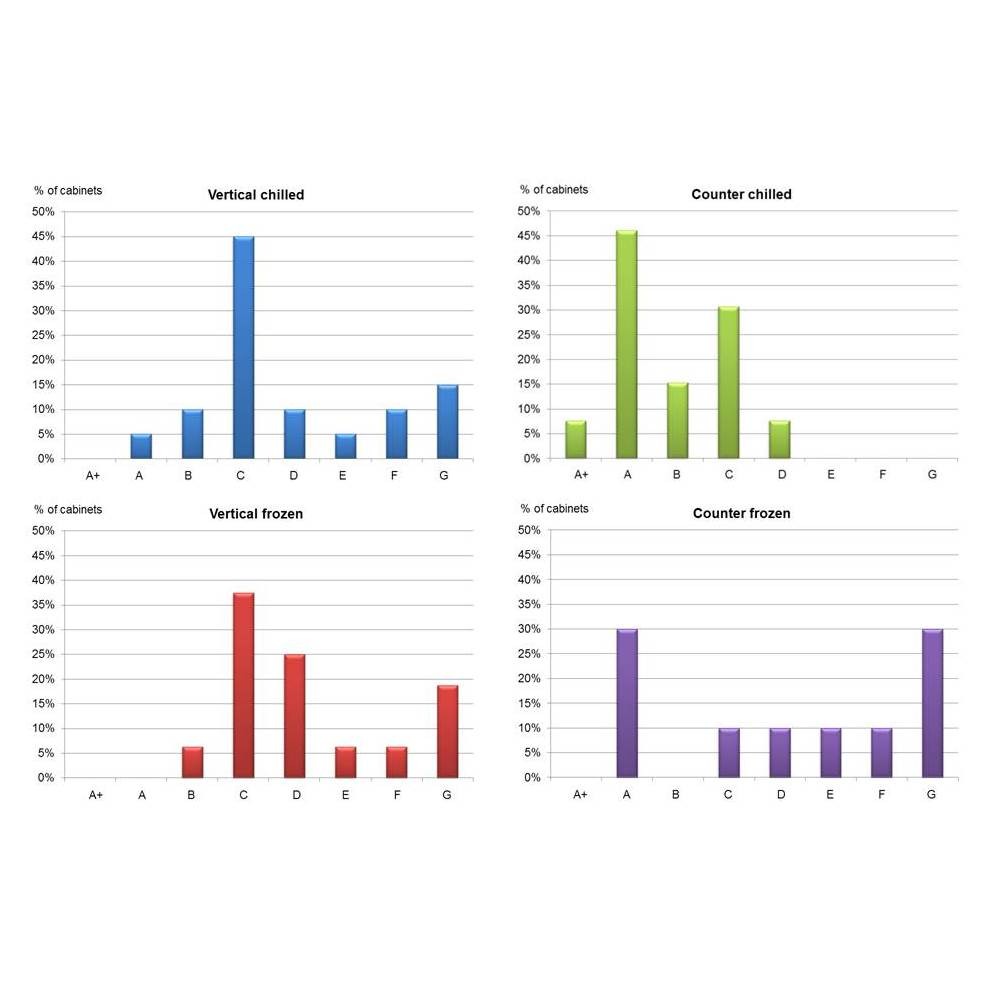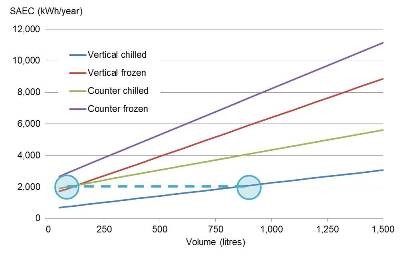‘A’ rated professional cabinets still scarce

One year on from energy labels for professional cabinets being applied, what is the situation? It has been a legal requirement to energy label almost all professional cabinets since 1 July 2016. Labels from A to G or A++ to G are applied to cabinets. We looked at the labels claimed by manufacturers within the 4 main professional energy labelling categories (vertical chilled, vertical frozen, counter chilled, counter frozen). It was clear that although the situation has improved over the last year there are still a number of manufacturers who have not applied labels to their products (it is a legal requirement to provide the energy efficiency class and energy efficiency index for all products covered by the energy labelling Regulation). We looked at the best performing cabinets in the 4 labelling categories from 22 manufacturers selling products in Europe. What we found was that counter chillers appeared to be the best performing cabinets with cabinets labelled between A+ and D. Vertical freezers appeared to be the worst performing group with the best cabinets between B and G. The energy labels for upright chillers and counter freezers ranged from A to G.
The fact that counter chillers seem to have the highest energy labels reflects results from our testing and seems logical if the energy label thresholds are examined. The graph below shows the minimum energy performance thresholds for each professional cabinet type across a range of cabinet volumes. It is clear that a chilled counter is allowed to use almost the same energy at 50 litres volume as a vertical chilled cabinet at 900 litres. When examining the market data it was clear that smaller cabinets had higher energy labels and so the energy labelling Regulation appears to favour smaller cabinets.

There is obviously still great potential to improve efficiency of cabinets (note that our review was on the best labels claimed by each manufacturer and so even when a manufacture had an A or B rated cabinet they may also have had other similar cabinets rated at a lower label).
Once manufacturers have labelled their cabinets, there is clearly a commercial benefit in improving performance. New challenges are on the horizon, as from 1 January 2018 the minimum energy efficiency index allowable will be 95 (i.e. the G label will be removed). From 1 July 2019 the minimum energy efficiency index allowable will be 85 (i.e. the F label will be removed). From our analysis 22% of the top performing products were labelled as F or G and therefore this indicates that even the best performing products will need work to improve performance. In addition the Commission will review the professional energy labelling Regulation no later than five years after its entry into force and so tightening of the Regulations may occur at any stage before 2021.
Now that cabinet performance can be compared there is greater competition in the market and manufacturers wish to improve performance of their cabinets and to achieve highly rated products. This would appear to be in response to some manufacturers already being able to produce A+, A or B rated products.
If you would like further information about developing the performance of professional cabinets please contact Judith Evans or Alan Foster at RD&T (j.a.evans@rdandt.co.uk or alan.foster@rdandt.co.uk).